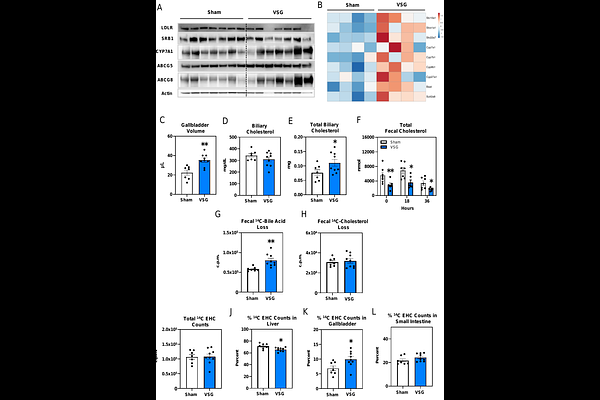Cholesterol Metabolism in a Murine Model of Vertical Sleeve Gastrectomy

Cholesterol Metabolism in a Murine Model of Vertical Sleeve Gastrectomy
Whang, E.; Ferrari, A.; Kennelly, J. P.; Gao, Y.; Xiao, X.; Jarrett, K.; Bedard, A.; de Aguiar Vallim, T. Q.; Tontonoz, P.
AbstractThe most effective and durable treatment for obesity is metabolic bariatric surgery. Currently, vertical sleeve gastrectomy (VSG) has become the preferred surgical method to achieve sustained weight loss and reverse obesity-related disease. Human studies have documented an improvement in dyslipidemias. 40% of VSG patients can discontinue statin treatment by 6 months, while alterations in plasma bile acids and synthesis have been observed after bariatric surgery. Although it is well known that cholesterol is the precursor for all bile acids, the link between changes in the plasma cholesterol and bile acids remains unclear in the context of VSG. Here, we present a murine model of VSG that leads to a marked decrease in plasma cholesterol levels despite no difference in body weight compared to sham surgery. Our results demonstrate that gastric resection lowers systemic cholesterol burden by promoting the hepatobiliary elimination of cholesterol through the upregulation of bile acid synthesis. These observations imply that gastric resection impacts overall hepatic physiology and cholesterol homeostasis. Understanding these weight-independent changes provides an opportunity to discover novel regulatory pathways that may be harnessed for therapeutic purposes.